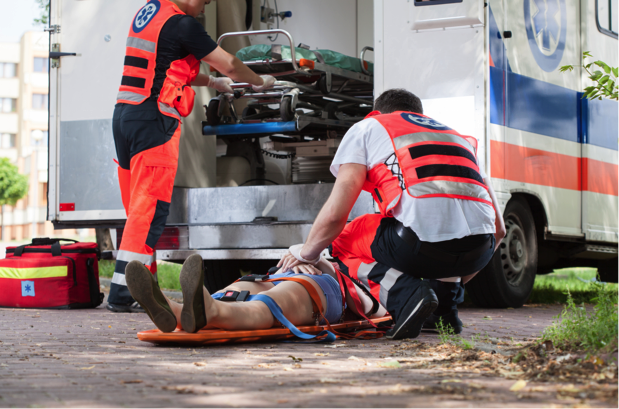
Emergency medical responders are responsible for saving lives every day. Their knowledge and skills enable them to quickly assess and treat patients who may be unconscious, unable to communicate, or located in remote terrain.
However, no matter how skilled a paramedic may be, they rely on a variety of medical equipment. Along with portable oxygen and a portable defibrillator, portable suction should be a key item in any EMS kit.
4 Scenarios Where Portable Medical Suction Counts
Paramedics are experts in field care, but they require the right equipment to provide it. Here are four situations in which a portable suction device could be a crucial component of the EMS kit.
1. The patient requires treatment before transport
Most ambulances are equipped with a mounted suction apparatus, but that’s of little use when a patient is located up several flights of stairs or in a remote field location. When a patient needs to be stabilized before transport, a portable suction device can help paramedics keep the patient’s airway clear until they can be loaded into the ambulance. Taking the time to ‘get the suction pump from the truck,’ could prove costly to the patient outcome.
2. Head Trauma
Head trauma can mean loss of consciousness and copious fluids draining into the airway. That combination equals aspiration and death, or weeks of recovery from aspiration pneumonia. Having a portable suction pump at hand is no guarantee of complete success, but it is the best first step to help establish and maintain an airway.
3. When multiple patients require airway management at a scene
In cases of natural disasters or other situations that result in mass casualties, a single EMS crew may need to treat many victims at the same time. In this situation, a portable suction unit means paramedics can treat multiple patients quickly and efficiently. For example, one patient can be loaded into an ambulance and receive treatment from the mounted suction unit, while another patient’s airway is managed with portable suction.
4.COVID-19 Patients
COVID-19 causes inflammation that creates lung secretions. Keeping airways clear is a critical component of treatment, and portable suction devices also mitigate contamination risks associated with an ambulance-mounted unit. Always remember that emergency suctioning should be used only for COVID-19 patients who cannot clear their airway, who are actively aspirating or are at risk of doing so, and when there is a clear airway obstruction.
Portable Medical Suction Device: Your Commitment to Patient Safety
Emergency medical responders take pride in helping people in the worst conditions. Equipping your EMS teams with portable suction devices specially designed for field use shows your commitment to your team’s success. It also delivers the message that your EMS company puts patient safety above all else.
No one likes to think they’re unappreciated in the workplace, and your EMS team is no different. When a work team must try to ‘make do’ without necessary equipment, it can lead to frustration and poor morale.
Provide your EMS team with all the basic equipment they need to perform well in the field. That includes portable medical suction devices. By ensuring your teams are fully equipped to tackle any field emergency, you demonstrate how much you support them--and that can only lead to a high-functioning team with great morale.
Does your EMS squad have portable emergency suction? Let us know in the comments section how having portable suction has helped your team.
Editor's note: This blog was originally from July 2021. It has been re-published with additional up to date content.















